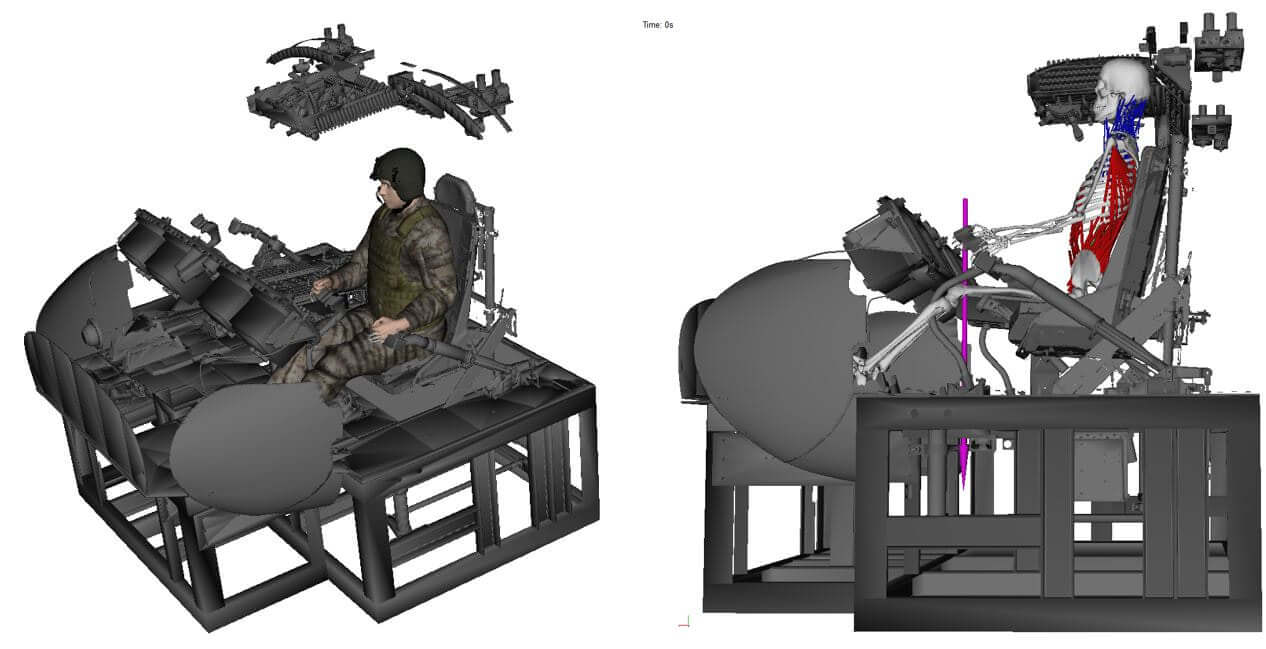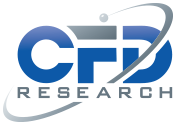Biomechanics is the study of the structure, function, and motion of the mechanical aspects of biological systems, at any level from whole organisms to organs, cells and cell organelles, using the methods of mechanics. Over the years, CFD Biosciences has extensively developed comprehensive computational tools, under CoBi framework, that can aid us in the investigation of human body response under extremely complex loading conditions. Wide variety of biomechanical models were developed to computationally simulate the human body organ response under different loading conditions. Depicted below includes the application of CoBi tools for development of brain and spinal injury biomechanical models.
Furthermore, CoBi tools have been used to simulate wide-variety of biophysics models such as ballistic penetration injury, axonal damage using electromechanical modeling, musculoskeletal injury to the neck, shoulder, lower extremity and spine, biodynamics of aircraft pilot-ejection seat, human body exposure to RF waves and associated bioeffects, cardiovascular response to trauma and hemorrhage, mechanobiology of neuro axonal structures in vitro and in vivo, pulmonary toxicology in response to inhaled nanoparticles and chem/bio agents, and others. Shown here are some examples of different biophysics phenomenon investigated for different organ systems.

In addition to the above models, CFD Biosciences has developed software tools for studying human biodynamics and injury prediction related to areas such as load carriage, head supported mass, ergonomics, repetitive tasks or loading, rehabilitation, prosthetics.
Mobile/Cloud Personalized Predictive Health Avatar
To enable the emerging P4 (predictive, preventative, personalized, participatory) medicine CoBi software, typically used for 3D high-fidelity simulations, have been adapted for mobile/cloud fast computing with interfaces to cell phones and tablets. The human body health avatar integrating the anatomy, physiology, systems biology, genetics and pharmacology for specific diseases is the critical component of CoBi P4 medicine. We have developed prototype P4 modules for asthma, COPD, diabetes, glaucoma, psoriasis, opioids addiction and neurotrauma. With our academic partners CoBi based P4 tools are being developed for other diseases including colorectal cancer, respiratory viral infection.
The P4 framework, CoBi-Pulmo, for lung diseases depicted below includes personalized patient body, airways, lungs and the whole body PBPK of inhaled and oral medications as well as pharmacodynamics of drug efficacy and potential adverse effects.

The CoBi multiscale computing engine shown above is invisible to the patient as it is deployed on a cloud computing with direct link to patient’s mobile device and wearable sensors. In the P4 Pulmo framework, shown below, the health and activity sensors, such as the Fitbit, pulse oximeter, spirometer and other devices transmit the data to the cell phone and then, along with time-stamped patient self-reported symptoms, are sent to the cloud database for CoBi analytics. The cell phone App with user friendly disease specific GUI provide the dynamic feedback to the patient and to his physician.
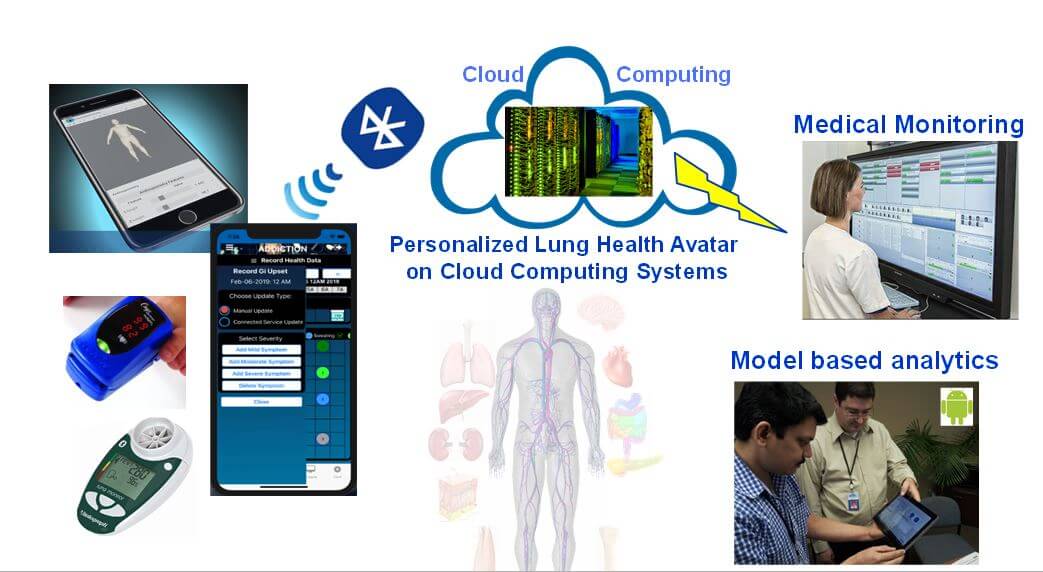
Avatar Sizing and Animation
Over the years, CFD Biosciences has extensively developed a comprehensive Anthropometric Model Generator (AMG) tool, under the CobiDyn framework. This software can generate a human avatar based on as little as four anthropometric measurements, such as height, weight, chest and waist circumference. Accuracy of predictions is close to manual measurements and can be more accurate than 3D body scans. Detailed body measurements can be generated, as well as a surface, volumetric (tetrahedral) mesh, or musculoskeletal model of the avatar. CobiDyn further has the capability to animate volumetric meshes using a motion database of military motions and motion retargeting and blending algorithms. Avatars can be saved at different time points in the animation and used for example for simulations.
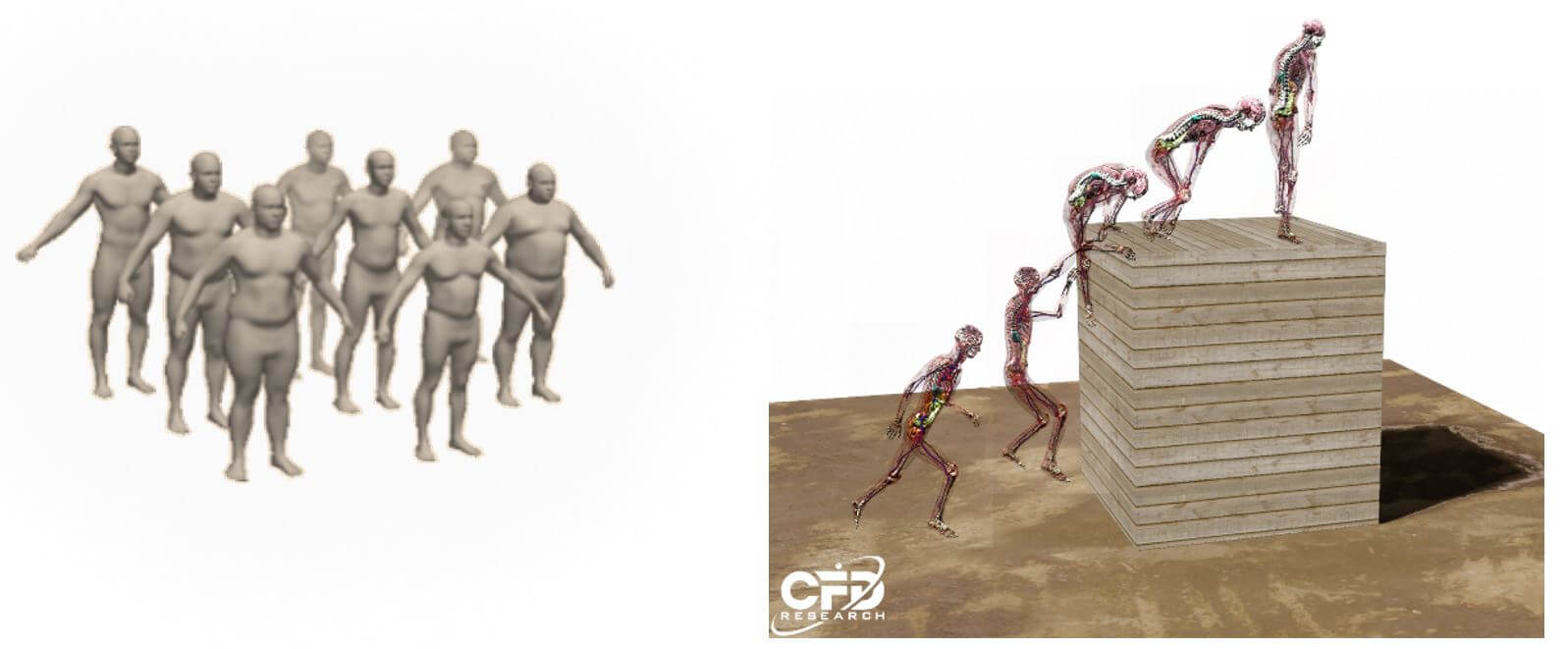
Gaming and Remote Monitoring for Physical Therapy
CFD Biosciences has developed prototype apps for rehabilitation with gaming, self-management and remote monitoring elements to improve accessibility and compliance to rehabilitation. The novelty of our approach is that it focusses on making rehabilitation exercises more fun and easier to perform at home, while being remotely monitored by a clinician. Prototypes have been developed for vestibular rehabilitation as well as lower back pain.
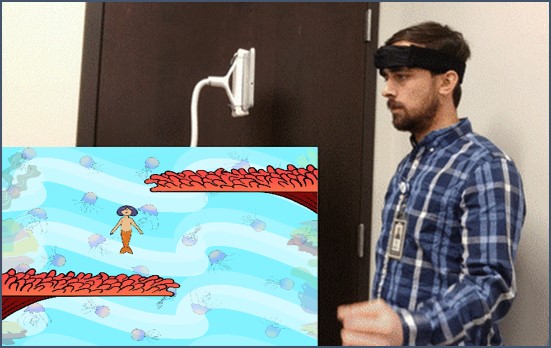
Biodynamics Simulations
CFD Biosciences has developed a software tool with GUI that can be used for various simulations and computations with biodynamics applications, such as injury or body size prediction. This tool can be developed in stand-alone APIs or web applications designed specifically for customer needs and requirements. Human biodynamics and injury prediction related to areas such as load carriage, head supported mass, ergonomics, repetitive tasks or loading, rehabilitation, prosthetics.
